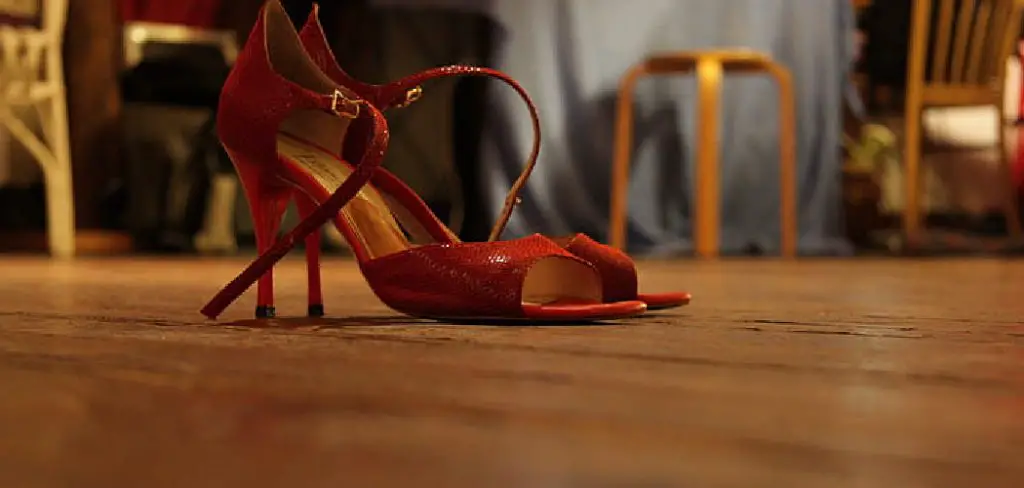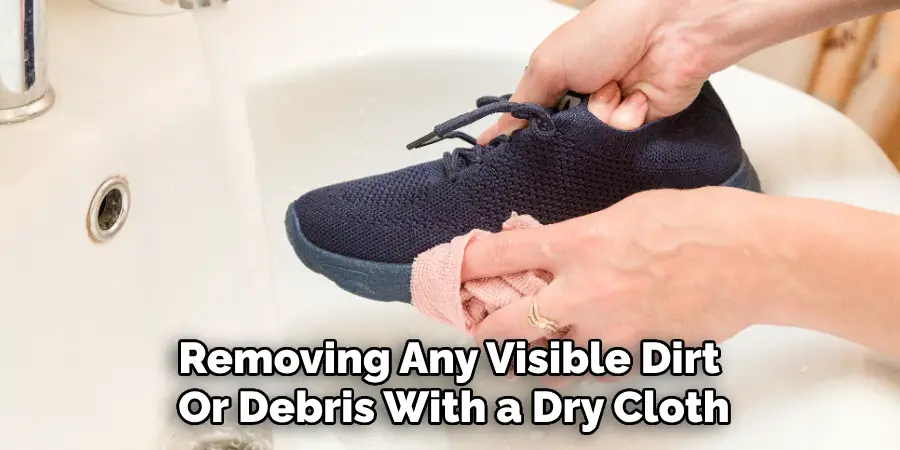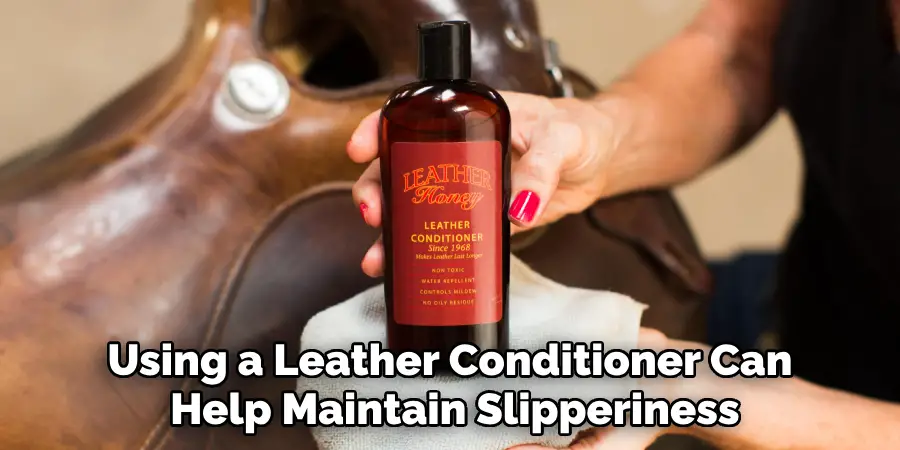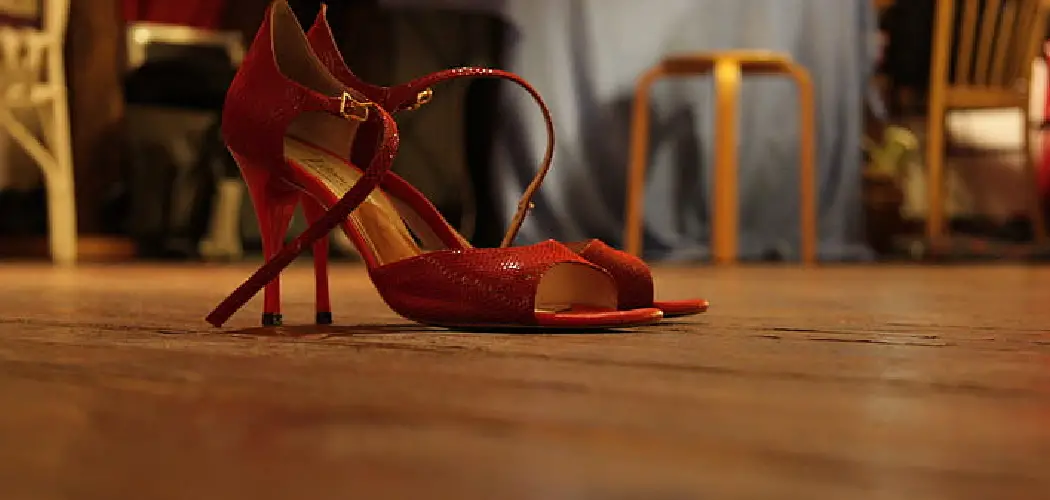Dancers often encounter situations where their dance shoes feel too sticky on the floor, making smooth movements and spins challenging. Whether you are a ballroom dancer, a ballet performer, or an enthusiastic social dancer, having the right amount of slipperiness on your shoes can significantly enhance your performance.

In this guide on how to make dance shoes slippery, we will explore various methods to make your dance shoes slippery, ensuring you glide effortlessly across the dance floor.
What is Slipperiness and Why is it Important?
Slipperiness refers to the ease with which the sole of your dance shoe can glide across the floor. This quality is particularly important in dance because it affects your ability to perform smooth and controlled movements. A slippery sole can reduce the friction between your shoe and the dance floor, allowing for seamless spins, turns, and slides.
Without the right amount of slipperiness, dancers may experience resistance that can impede their fluidity and increase the risk of injury due to sudden stops or jerking motions. Therefore, achieving the right balance of slipperiness is crucial for maintaining agility, precision, and safety during your performance.
Why Do Dance Shoes Lose Their Slipperiness?
Dance shoes can lose their slipperiness for several reasons. One common cause is the accumulation of dirt and debris on the soles. As dancers move across various surfaces, particulates can stick to the soles, increasing friction and making it harder to glide.
Additionally, repeated use can cause the soles to wear down, especially if they are made of leather or suede. This wear and tear can lead to a rougher texture, which naturally increases grip and reduces slipperiness. Environmental factors such as humidity and moisture can also impact the soles, causing them to become tackier.
Finally, the type of floor on which you are dancing can play a role; certain materials like rubberized or sticky floors can exacerbate the problem. Understanding these factors can help dancers take proactive measures to maintain the slipperiness of their dance shoes.

Needed Materials
Soapy Water:
Creating a soapy solution is the simplest way to make dance shoes slippery. Mix together warm water and a mild soap or detergent in a bowl.
Rubbing Alcohol:
Rubbing alcohol can be used to break down any buildup on the soles of your dance shoes, restoring slipperiness. It is also readily available at most drugstores.
Suede Brush:
If your dance shoes have suede soles, using a suede brush can help restore their texture and increase slipperiness. These brushes are specifically designed for use on suede materials and can be found easily at shoe stores or online retailers.
Sandpaper:
For leather-soled dance shoes, sandpaper can be used to gently smooth out any rough spots and restore slipperiness.
Baby Powder or Talcum Powder:
These powders can be applied to the soles of your dance shoes to reduce friction, making them more slippery.
8 Simple Methods on How to Make Dance Shoes Slippery
Step 1: Clean Your Soles
The first step to making your dance shoes slippery is to clean the soles thoroughly. Start by removing any visible dirt or debris with a dry cloth or brush. For more stubborn buildup, use a damp cloth with a bit of soapy water to scrub the soles gently. Make sure to use a mild soap that won’t damage the material of your shoes.
After cleaning, wipe down the soles with a clean, damp cloth to remove any soap residue, then let the shoes air dry completely before moving on to any other treatments. This step is crucial as it ensures that any additional methods you use will be more effective on a clean surface.

Step 2: Use Rubbing Alcohol
Once your dance shoes are clean and dry, the next step is to use rubbing alcohol to restore slipperiness. Pour a small amount of rubbing alcohol onto a clean, soft cloth. Gently rub the cloth over the soles of your dance shoes, focusing on areas that feel particularly sticky or rough. The rubbing alcohol works to break down any remaining residues or sticky substances that cleaning might have missed.
Allow the soles to air dry completely after applying the rubbing alcohol. This method is particularly effective for non-sued soles and can be repeated as necessary. However, be cautious not to overuse rubbing alcohol, as excessive application may dry out or damage certain materials over time.
Step 3: Brush with a Suede Brush
For shoes with suede soles, using a suede brush can help restore the texture and increase slipperiness. Gently brush the sole of your dance shoe in one direction, using short strokes to remove any dirt or buildup. Flip the brush over and use the rubber bristles on the other side to loosen any remaining debris. Repeat this process until the sole feels smoother and less tacky.
The use of a suede brush may also help to revive the color of your suede soles, making them look newer and more vibrant.
Step 4: Try Sandpaper
If your dance shoes have leather soles, sandpaper can be used to restore slipperiness. Using fine-grit sandpaper, gently rub the sole in one direction until it feels smoother and less rough. Wipe away any dust or debris with a clean cloth before trying on your shoes. Repeat this process as needed until you feel satisfied with the level of slipperiness.
Be cautious when using sandpaper as it can damage certain materials if not used carefully. Use a light hand and check the texture of the sole frequently to avoid over-sanding.
Step 5: Use Baby Powder or Talcum Powder
Both baby powder and talcum powder can be used as a quick and easy solution for adding slipperiness to your dance shoes. Simply sprinkle a small amount onto the soles of your shoes, then use a soft cloth or brush to distribute it evenly. Make sure not to apply too much powder, as it can create clumps and reduce slipperiness instead of increasing it. This method is best for non-suede soles.
The powder will absorb any moisture and reduce friction, making your shoes more slippery. Keep in mind that with repeated use, the powder may build up on the soles and need to be cleaned off before applying more.
Step 6: Use a Leather Conditioner
For leather-soled dance shoes, using a leather conditioner can help maintain slipperiness while also protecting and nourishing the material. Apply a small amount of conditioner onto a soft cloth and rub it into the soles in one direction. Allow it to fully dry before trying on your shoes.
Leather conditioners are widely available at shoe stores or online retailers and should be used regularly to keep your dance shoes looking and feeling their best.

Step 7: Walk on a Carpet or Towel
Another simple method for making dance shoes slippery is to rub the soles against a carpet or towel. This will help to remove any buildup and restore slipperiness. Just make sure not to overdo it, as excessive friction can also cause damage to your shoes.
It may also be helpful to use a towel or cloth while dancing, especially on slippery floors, as this can help to maintain slipperiness and prevent your shoes from getting too sticky.
Step 8: Rotate Your Dance Shoes
Last but not least, it is essential to rotate your dance shoes regularly to avoid excessive wear and tear. Using the same pair of dance shoes every time you practice or perform can cause them to become worn down quickly, reducing their slipperiness.
Having multiple pairs of dance shoes that you rotate between will not only prolong their lifespan but also allow you to always have a fresh and slippery pair when needed. Make sure to follow proper storage methods on how to make dance shoes slippery for your dance shoes as well, such as keeping them in a cool and dry place to maintain their quality.
Frequently Asked Questions
Q: How Often Should I Make My Dance Shoes Slippery?
A: The frequency of making your dance shoes slippery will depend on how often you wear them and the type of surface you dance on. It is recommended to clean and restore slipperiness after every few uses, or as needed if you notice a decrease in slipperiness.
Q: Can I Use Hairspray to Make My Dance Shoes Slippery?
A: While some dancers may recommend using hairspray on the soles of dance shoes, it is not recommended. Hairspray can create a sticky residue and damage the material of your shoes over time. It is best to stick to methods specifically designed to make dance shoes slippery.
Q: Will Making My Dance Shoes Slippery Damage Them?
A: If done correctly and in moderation, making your dance shoes slippery should not cause any damage. However, excessive use of certain methods such as rubbing alcohol or sandpaper, can cause wear and tear on the material of your shoes. It is best to use caution and regularly rotate your dance shoes to avoid excessive damage.
Q: Can I Apply Slipperiness to Any Type of Dance Shoes?
A: Some methods may be more suitable for certain types of dance shoe materials, such as suede or leather. Always read and follow the instructions carefully for the best results and to avoid any potential damage to your shoes.

Conclusion
Maintaining the optimal slipperiness of your dance shoes is essential for peak performance and preventing injuries on the dance floor. By following these 8 simple methods on how to make dance shoes slippery, from cleaning your soles and using rubbing alcohol to applying powders and rotating your shoes, you can ensure that your dance shoes remain in excellent condition.
Regular care and attention to your shoes not only improve their performance and durability but also enhance your overall dance experience. So, take the time to apply these tips and enjoy the benefits of having perfectly slippery dance shoes ready to support you in every move and routine.

